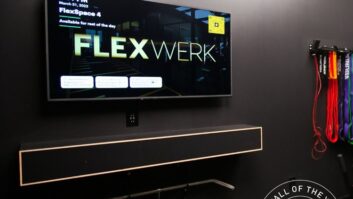Before you dismiss Microsoft’s Project HoloLens as an even lamer Google Glass (I mean, come on, it’s Microsoft!) consider the potential of an application experienced first-hand by Wired senior writer Jessi Hempel, who reported on the technology following her trip to the company’s Redmond, WA, campus this past October.
At Microsoft’s HQ, Hempel met with Alex Kipman, the inventor of what became Microsoft’s motion-sensing Xbox accessory, Kinect, and the brains behind the company’s just-introduced “head-mounted holographic computer” prototype.

Microsoft’s Project HoloLens holographic headset prototype
We’re heard about Google’s Oculus Prime “virtual reality” headset, but, according to Hempel, HoloLens is less boxy than that technology and, in a word, “amazing.” According to her description, it “amplifies the special powers that Kinect introduced, using a small fraction of the energy. The depth camera has a field of vision that spans 120 by 120 degrees—far more than the original Kinect—so it can sense what your hands are doing even when they are nearly outstretched. Sensors flood the device with terabytes of data every second, all managed with an onboard CPU, GPU and first-of-its-kind HPU (holographic processing unit). Yet, Kipman points out, the computer doesn’t grow hot on your head, because the warm air is vented out through the sides. On the right side, buttons allow you to adjust the volume and to control the contrast of the hologram.”
However, what jumped out to me the most from the Wired article was part of Hempel’s demo “in a secret basement lab” involving an electrician “scenario.”
Here’s how the writer described the experience:
“I enter a makeshift living room, where wires jut from a hole in the wall where there should be a lightswitch. Tools are strewn on the West Elm sideboard just below it. Kipman hands me a HoloLens prototype and tells me to install the switch. After I put on the headset, an electrician pops up on a screen that floats directly in front of me. With a quick hand gesture I’m able to anchor the screen just to the left of the wires. The electrician is able to see exactly what I’m seeing. He draws a holographic circle around the voltage tester on the sideboard and instructs me to use it to check whether the wires are live. Once we establish that they aren’t, he walks me through the process of installing the switch, coaching me by sketching holographic arrows and diagrams on the wall in front of me. Five minutes later, I flip a switch, and the living room light turns on.”
To me, this particular demo resonated with me, because not only does it offer great potential for so many applications from DIY home improvement, to home health care, but it could provide an amazing opportunity in the future for custom integrators. Sure, remote monitoring for system reboots is becoming more and more common in the systems we install, but just imagine the other ways you could help your clients work through confusion involving their installed systems, if they own a HoloLens headset (and can’t you imagine many of your high-net-worth, tech-enthusiast clients being the first in line to buy one?)
Others see great potential is this technology for gamers, in particular those who love to build virtual worlds using Minecraft (which was purchased by Microsoft late last year).
Who knows if this project will actually make it that far, but it’s something fun to ponder. Microsoft hands it off to developers this spring. It’ll be interesting to see where they will take it.
Jeremy J. Glowacki ([email protected]) is the editorial director of Residential Systems magazine.







